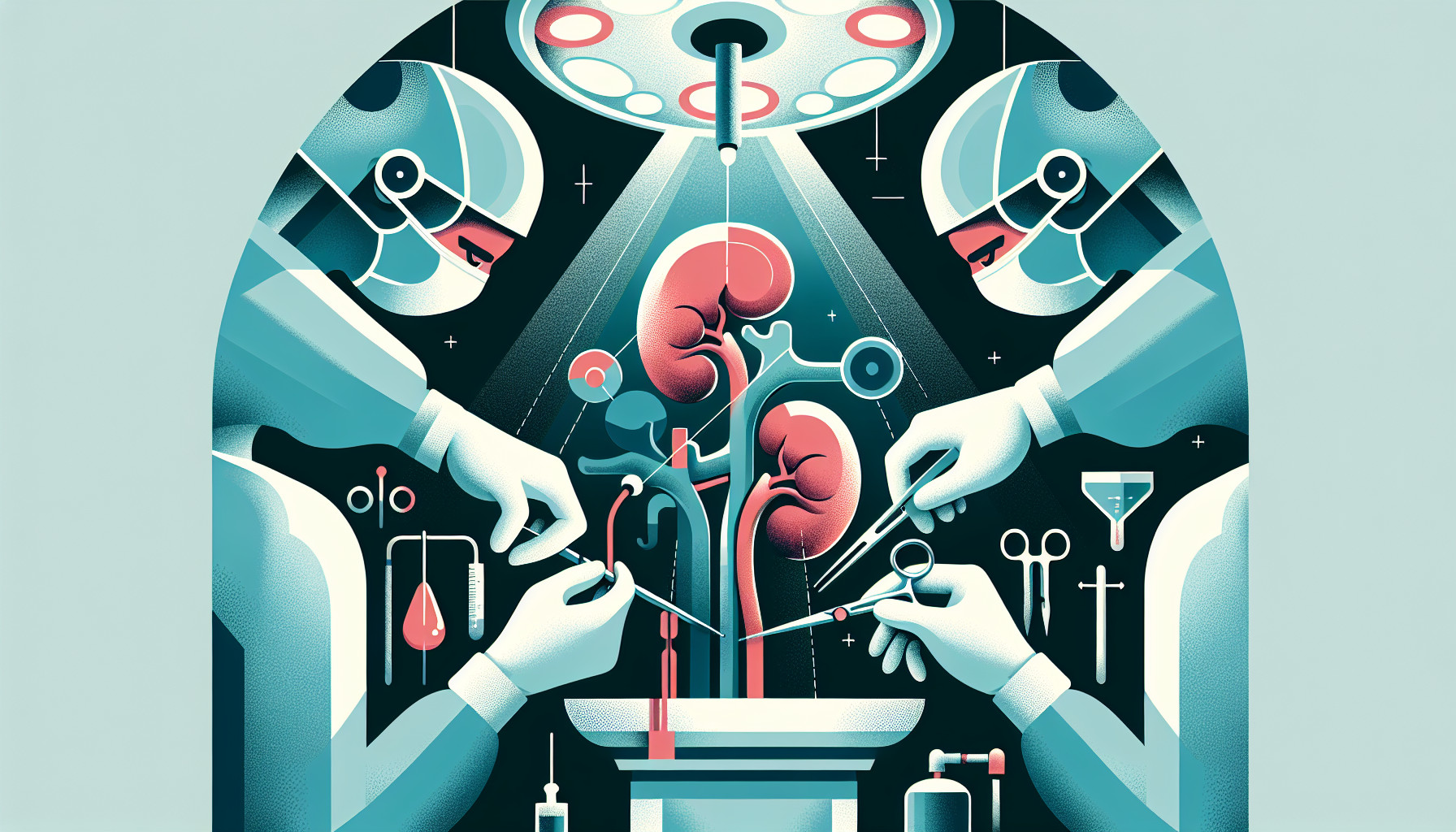Our Summary
This research paper is about the best way to control blood flow during a particular type of kidney removal procedure. Two devices, Hem-o-Lok® clips and staplers, are commonly used for this purpose. The researchers looked at lots of scientific articles and assessed them for quality to understand which of these devices works best.
They found that clips are less likely to fail during use, can make the removed kidney’s blood vessels longer, and are more cost-effective. However, staplers can reduce the amount of time the kidney is without blood and lower blood loss.
The researchers didn’t find a big difference between the two devices on whether they had to switch to open surgery, severe bleeding, death, and if blood transfusion was needed.
The conclusion was that neither device is perfect for this type of kidney removal procedure. Hem-o-Lok® clips are a safe and cheaper option, especially for right-sided removal or in cases where the blood vessels are different. But there’s still a risk that the clips might move, which could have serious consequences. They suggest that there are certain techniques that can reduce this risk.
FAQs
- What was the main finding of the research paper on controlling blood flow during kidney removal procedures?
- How do Hem-o-Lok® clips and staplers compare in terms of efficacy for kidney removal procedures?
- Are there any potential risks associated with using Hem-o-Lok® clips in kidney removal procedures?
Doctor’s Tip
Overall, a doctor might advise a patient undergoing laparoscopic nephrectomy to discuss with their healthcare provider the use of Hem-o-Lok® clips versus staplers for controlling blood flow during the procedure. It’s important to weigh the benefits and potential risks of each option and to follow any recommended techniques to minimize complications. Additionally, patients should follow their post-operative care instructions closely to ensure a successful recovery.
Suitable For
Overall, laparoscopic nephrectomy is typically recommended for patients who have kidney tumors, kidney cysts, kidney donation, or kidney disease that requires removal of the kidney. It is also recommended for patients who need a kidney transplant, have kidney stones, or have a kidney infection that cannot be treated with antibiotics. Additionally, laparoscopic nephrectomy may be recommended for patients who have a kidney that is not functioning properly and is causing symptoms such as pain, bleeding, or infection.
Timeline
Before a laparoscopic nephrectomy, a patient will typically undergo a series of medical tests and consultations to determine if they are a suitable candidate for the procedure. This may include blood tests, imaging scans, and discussions with the surgical team.
During the laparoscopic nephrectomy procedure, the patient will be placed under general anesthesia. The surgeon will make several small incisions in the abdomen to insert a laparoscope and other surgical instruments. The kidney will be carefully detached from surrounding tissues and blood vessels before being removed through one of the incisions.
After the procedure, the patient will be monitored in the recovery room before being transferred to a hospital room for further observation. Pain management medication will be provided to help with any discomfort. The patient will be encouraged to move around and begin light activities as soon as they are able to do so.
In the following weeks, the patient will have follow-up appointments with their healthcare team to monitor their recovery and ensure that there are no complications. It may take several weeks for the patient to fully recover from the surgery and return to normal activities.
Overall, laparoscopic nephrectomy is a minimally invasive procedure that offers a quicker recovery time and less scarring compared to traditional open surgery. However, like any surgical procedure, there are risks and potential complications that patients should be aware of.
What to Ask Your Doctor
- What are the potential risks and complications associated with laparoscopic nephrectomy using either Hem-o-Lok® clips or staplers for controlling blood flow?
- How will the choice between using clips or staplers during the procedure affect the length of time my kidney is without blood flow and the amount of blood loss?
- Are there any specific factors about my case that make one device more suitable than the other for controlling blood flow during the surgery?
- What techniques can be used to minimize the risk of complications such as clip migration with Hem-o-Lok® clips?
- How does the cost-effectiveness of using Hem-o-Lok® clips compare to using staplers for this type of kidney removal procedure?
- What are the potential long-term effects or considerations to keep in mind when choosing between Hem-o-Lok® clips and staplers for controlling blood flow during laparoscopic nephrectomy?
- Are there any alternative methods or devices that could be considered for controlling blood flow during the surgery, and how do they compare to Hem-o-Lok® clips and staplers in terms of effectiveness and safety?
Reference
Authors: Lachkar S, Boualaoui I, Ibrahimi A, El Sayegh H, Nouini Y. Journal: Fr J Urol. 2024 Jul;34(7-8):102656. doi: 10.1016/j.fjurol.2024.102656. Epub 2024 May 29. PMID: 38821383
